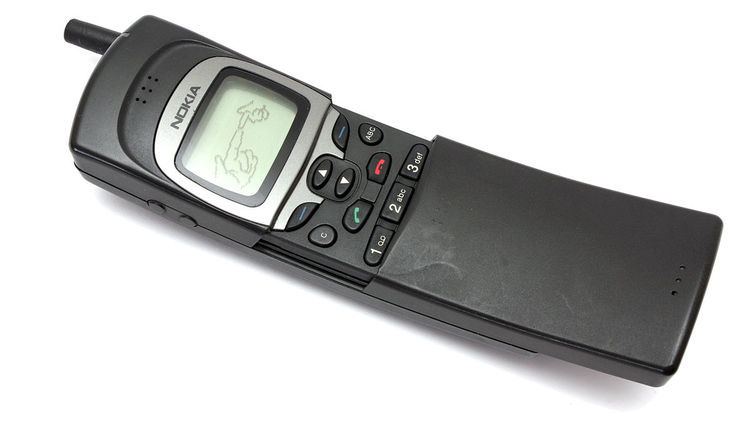Availability by country Discontinued Form factor Candybar | Successor Nokia 8810Nokia 7110 Dimensions 141 x 48 x 25 mm | |
 | ||
Nokia 8110 was the first of Nokia's high-end, 8000 series of phones released in 1996. Its distinctive styling was the first example of a 'slider' form factor. A sliding cover protected the keypad when being carried in the pocket and extended downwards in use, bringing the microphone closer to the mouth. The action of opening the cover also answered an incoming call. The prominent curvature of the case, particularly when open, earned it the nickname "banana phone".
Initially priced at a little bit less than €1000, it was designed for the business market and was one of the smallest and lightest phones on the market, but still had better battery life than its predecessor Nokia 2110.
The improved model 8110i was the first phone with the SSMS (Smart SMS) engine. The handsets could be updated OTA (Over The Air) with an intelligent menu structure, which allowed simple information input, input which was sent through a simple structured text message to an MT receiver. This station could interpret information and a structured text message back to the handset. Ring tone receiving by SMS was also part of the smart messaging protocol, so 8110i was also the first mobile phone to support it.
Nokia later stopped marketing Smart messaging and concentrated on the upcoming WAP standard, but has not dropped smart messaging support from new phones.
It was also the first Nokia phone with monochrome graphic LCD.
The phone was featured in the science fiction action film The Matrix (1999).
